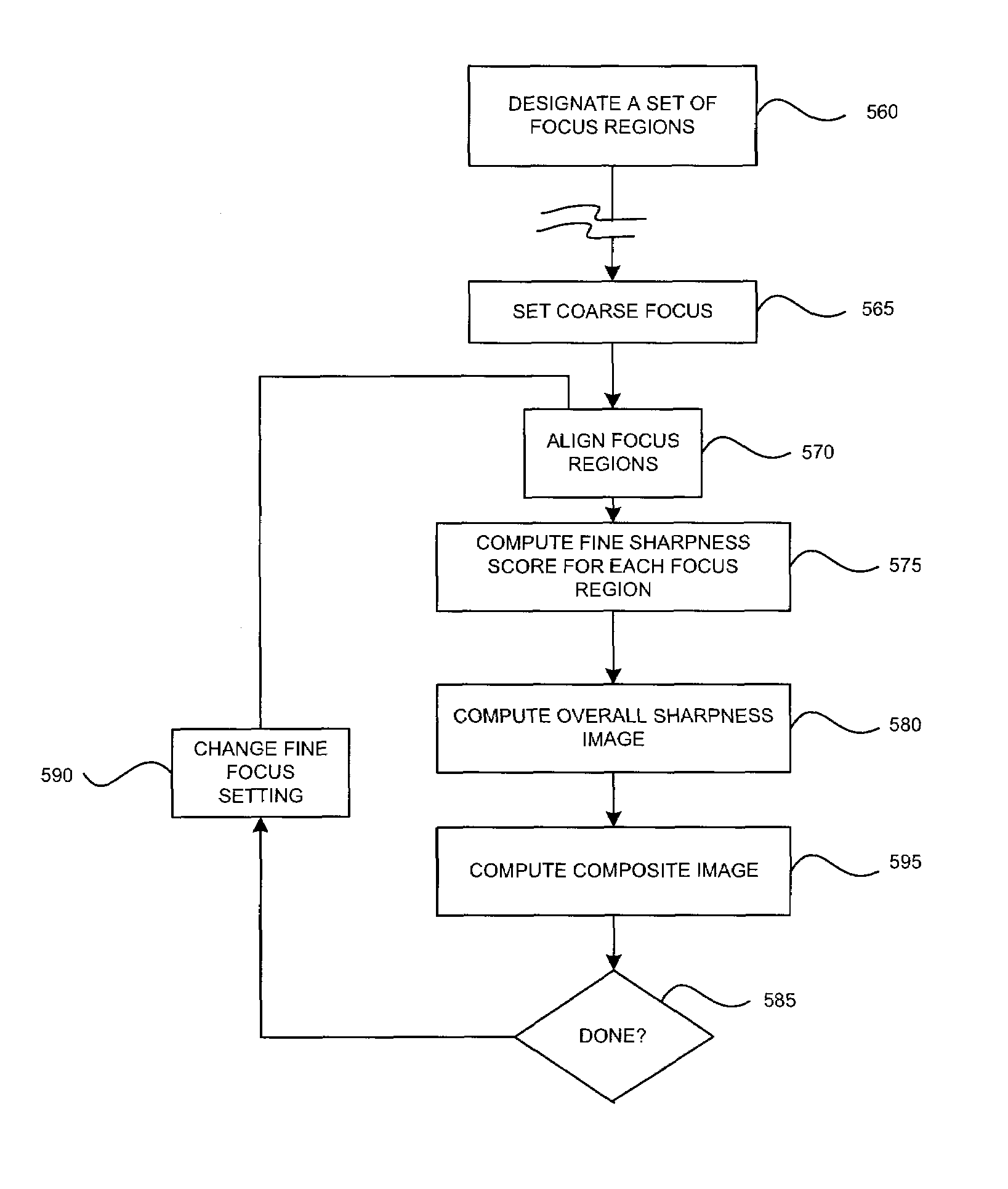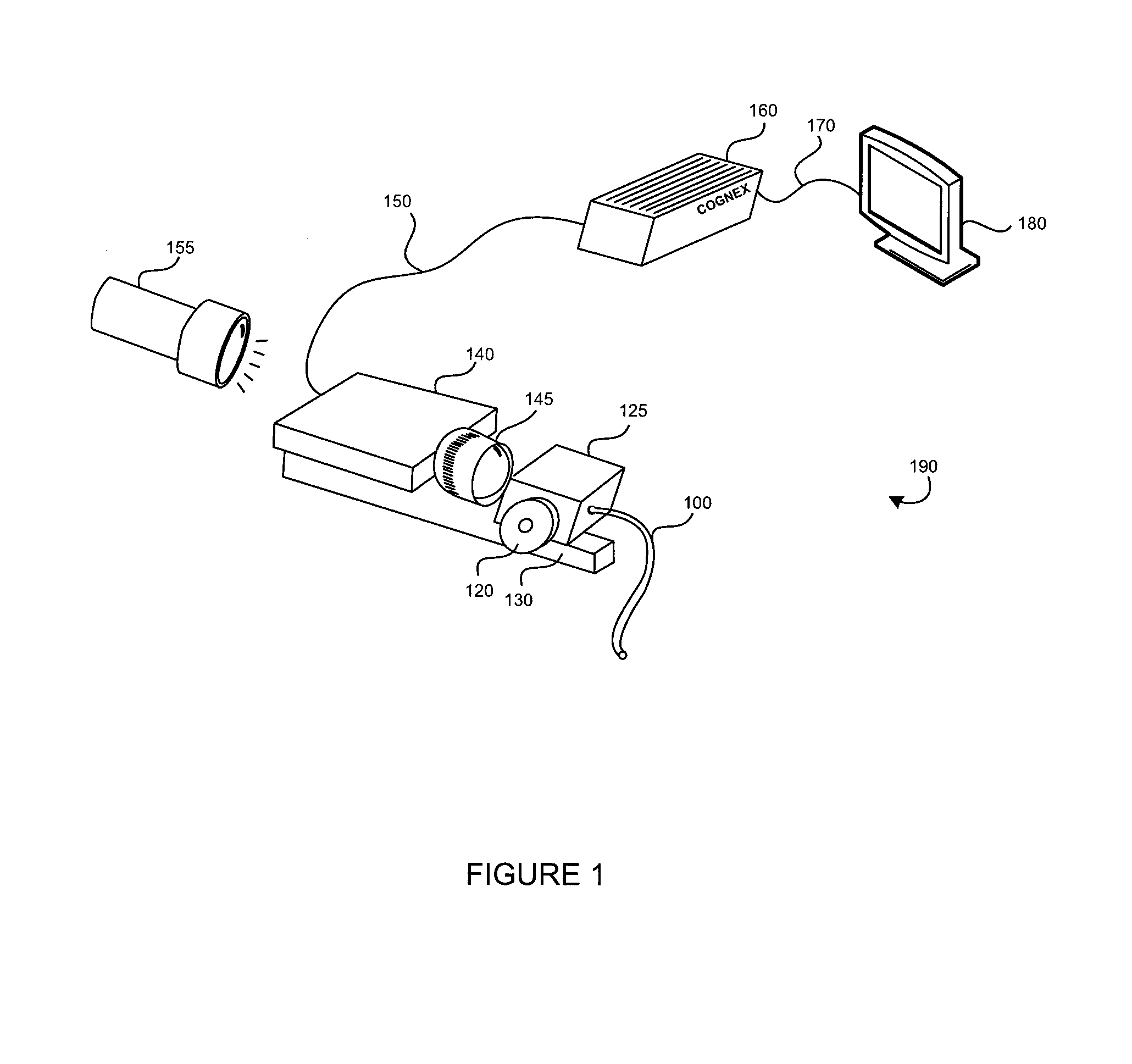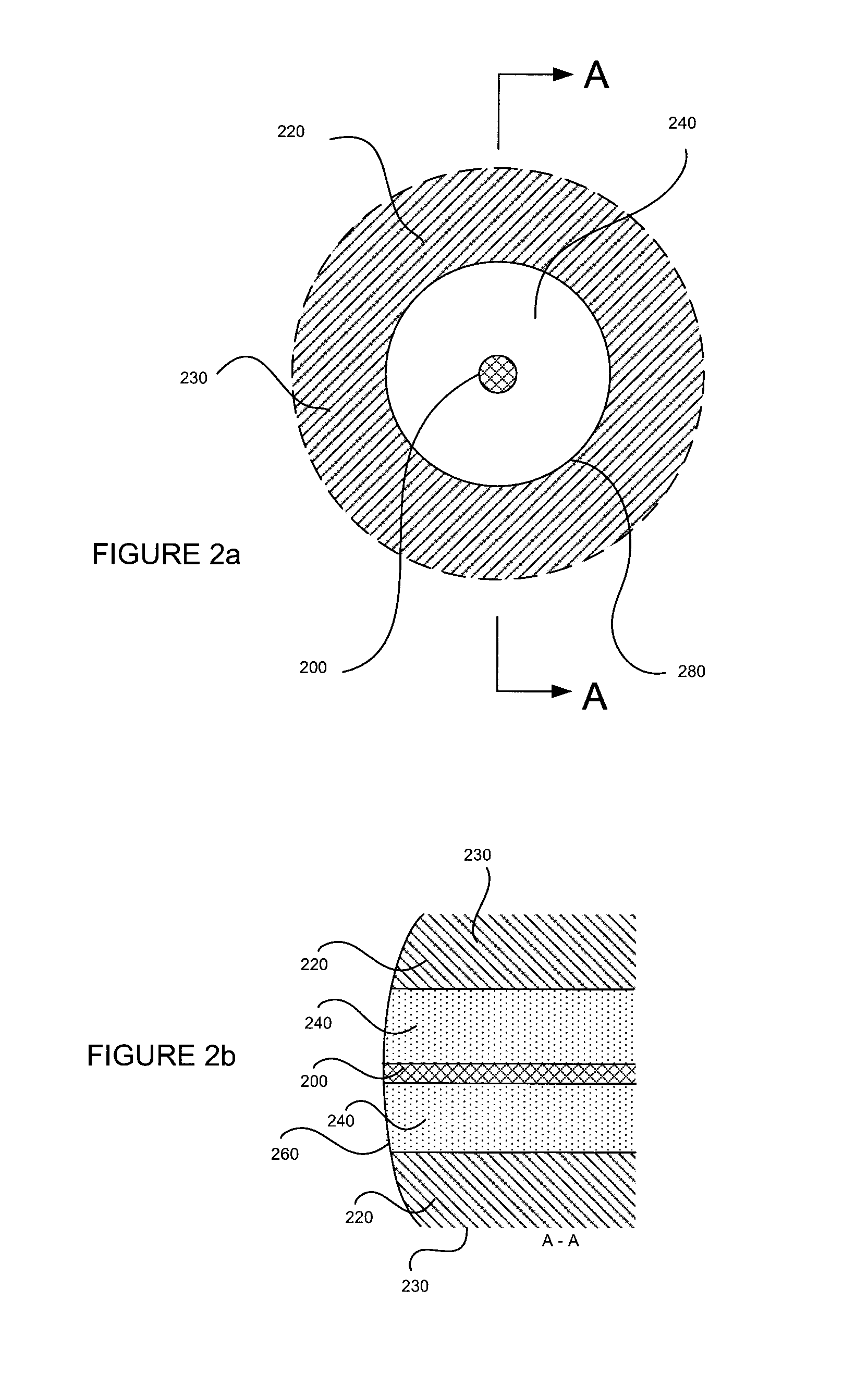Method for generating a focused image of an object
a focused image and object technology, applied in the field of machine vision, can solve the problems of inherently difficult inspection of the end face of a fiber optic cable, degradation of performance, and many inspection operations of human operators performing manual inspection, and achieve the effect of excluding the composite image, low sharpness measurement, and reducing the difficulty of manual inspection
- Summary
- Abstract
- Description
- Claims
- Application Information
AI Technical Summary
Benefits of technology
Problems solved by technology
Method used
Image
Examples
Embodiment Construction
[0028]FIG. 1 depicts a fiber optic fiber end inspection system 190 used to inspect the end face of a fiber optic cable 100. A camera 140 having a lens 145 is mounted to an inspection frame 130 and directed to an inspection fixture 125. The fiber optic cable 100 end face is presented to the lens 145 by inserting the fiber optic cable 100 end into the inspection fixture 125. A typical fiber optic end inspection system 190 will employ a microscope adapted for inspection of fiber, or fiberscope, to provide significant magnification of the fiber optic cable 100 end as it is presented to the lens 145 of the camera 140. The fiber optic cable 100 end face is illuminated by a light source 155. The inspection fixture 125 has a focus adjustment mechanism 120 that facilitates translation of the inspection fixture 125 relative to the camera 140 and inspection frame 130. Rotation of the focus adjustment mechanism 120 changes the distance between the lens 145 and the inspection fixture 125. One sk...
PUM
 Login to View More
Login to View More Abstract
Description
Claims
Application Information
 Login to View More
Login to View More - R&D
- Intellectual Property
- Life Sciences
- Materials
- Tech Scout
- Unparalleled Data Quality
- Higher Quality Content
- 60% Fewer Hallucinations
Browse by: Latest US Patents, China's latest patents, Technical Efficacy Thesaurus, Application Domain, Technology Topic, Popular Technical Reports.
© 2025 PatSnap. All rights reserved.Legal|Privacy policy|Modern Slavery Act Transparency Statement|Sitemap|About US| Contact US: help@patsnap.com



